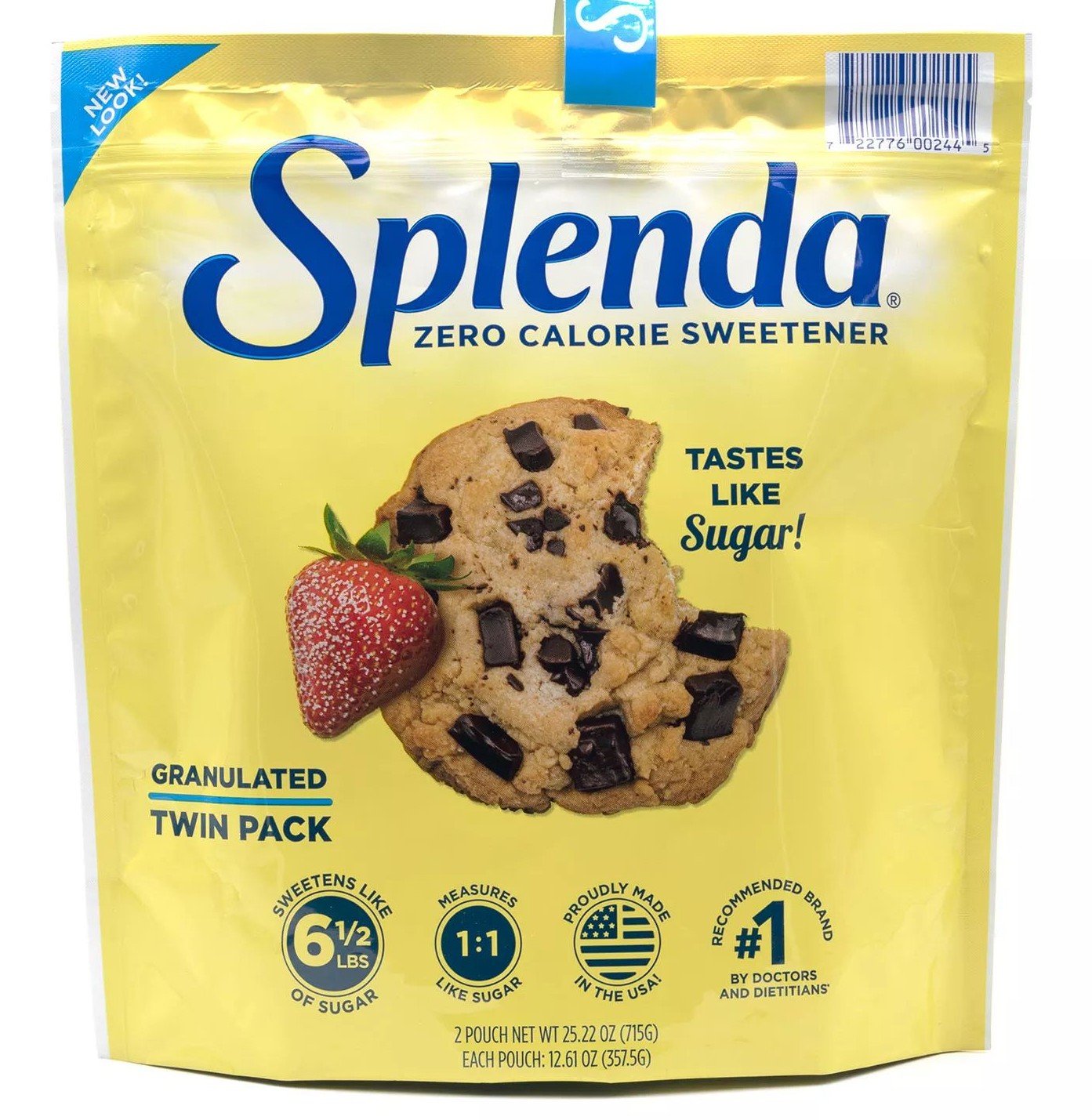 Pic1: front of package
Pic1: front of package Pic1: front of package
Pic1: front of package2021-08-28
Splenda is an artificial sweetener that is marketed as "zero-calorie" in the USA.
I am diabetic and like so many diabetics I fell for this Splenda scam.
I call it a scam, because that is what it is imo.
I bought Splenda to use it instead of sugar, because it is allegedly "safe for diabetics"
Imagine my surprise when I noticed that Splenda didn't make any difference at all.
It is just as bad for my blood glucose measurements as regular sugar.
According to Tate & Lyle's website, sucralose is a synthesized sugar that (allegedly) cannot be metabolized by the human body. As such it would be a true no-calorie sweetener.
They also claim that sucralose is 600 times sweeter than sucrose from which it is manufactured.
Other sources quote a 1000 to 1 ratio.
1. The large bags of Splenda (1 lb. and over) list only 2 ingredients: maltodextrin and sucralose.
2. The 1 gram sachets list TWO additives: dextrose and maltodextrin.
3. Splenda is 99.9% (or more) pure sugar for the human body. This explains why:
How can the manufacturer market Splenda as a "no-calorie" product?
They get away with it through a misleading marketing trick.
The US Food and Drug Administration (FDA) allows any product containing fewer than five calories per serving to be labeled as "zero calories" even when it is clearly not.
All the manufacturer has to do is to claim that one serving is 1 gram or less.
D'OH.
Of course, half a gram of Splenda has less than one gram of sugar.
Half a gram of Splenda (or sugar) has a 2 calories, which is less than the FDA 5 calories per-serving limit. As a result, Splenda can be marketed as a "zero-calorie" product, when for the body it is anything but.
What is wrong here of course, that somehow the manufacturer got away with claiming that 1 serving of Splenda is either half a gram (large bags) or 1 gram (sachets.)
By the same reasoning,
This marketing trick is of course a blatant misrepresentation of reality.
The manufacturer even goes so far as to claim that Splenda is not a significant source of sugars.
The manufacturer's claim that this product is "safe for diabetics" is just as true as a claim that sugar is safe for diabetics, meaning not at all.
Legally, courtesy of an unreasonable FDA definition, sugar could be marketed "zero-calorie" and "not a significant source of sugar" as long as you define one serving as one gram or less AND you don't eat more than one serving a day.
Diabetics know very well that the reality is very different. Sugar is the great killer for diabetics. Because Splenda is 100% sugar, replacing sugar with Splenda could result in serious health problems for the diabetic who trusts this marketing scam.
Yet legally, this may be permissible because of this weird FDA 'zero-calorie" definition.
In reality, ONE SERVING of Splenda is a lot more than 1 gram in most circumstances.
 Pic1: front of package
Pic1: front of package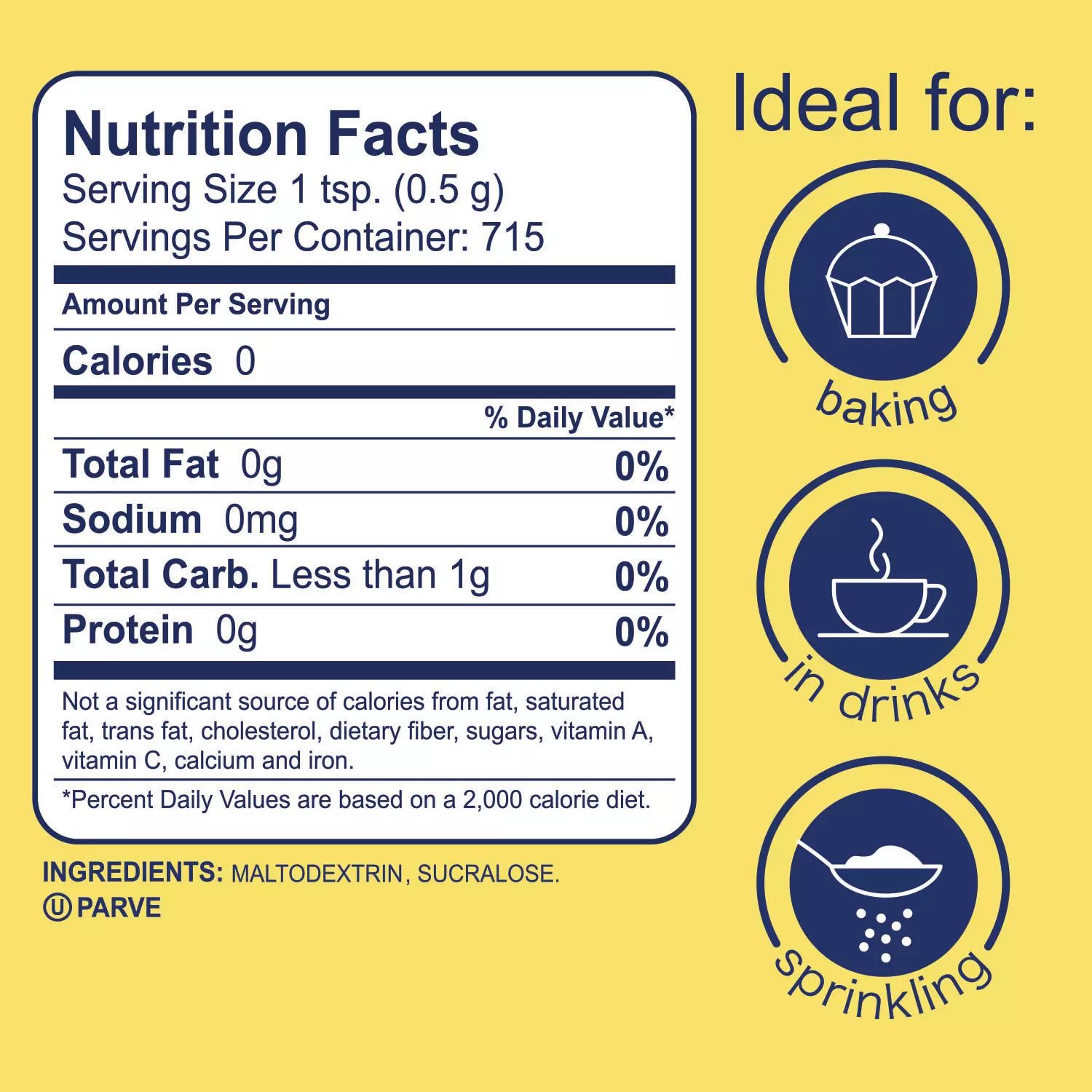 Pic2: fake nutrition "facts"
Pic2: fake nutrition "facts"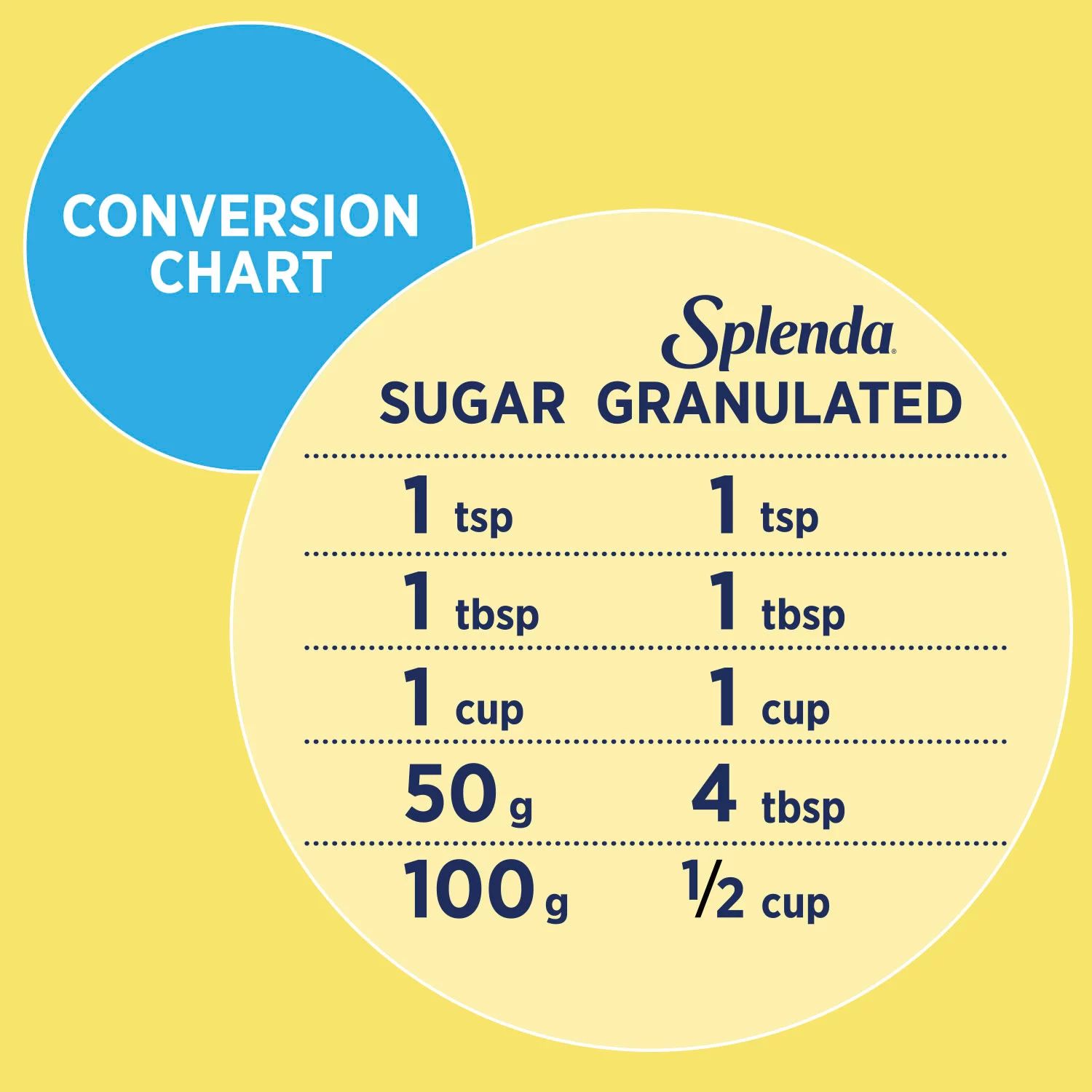 Pic3: one-to-one equivalency
Pic3: one-to-one equivalency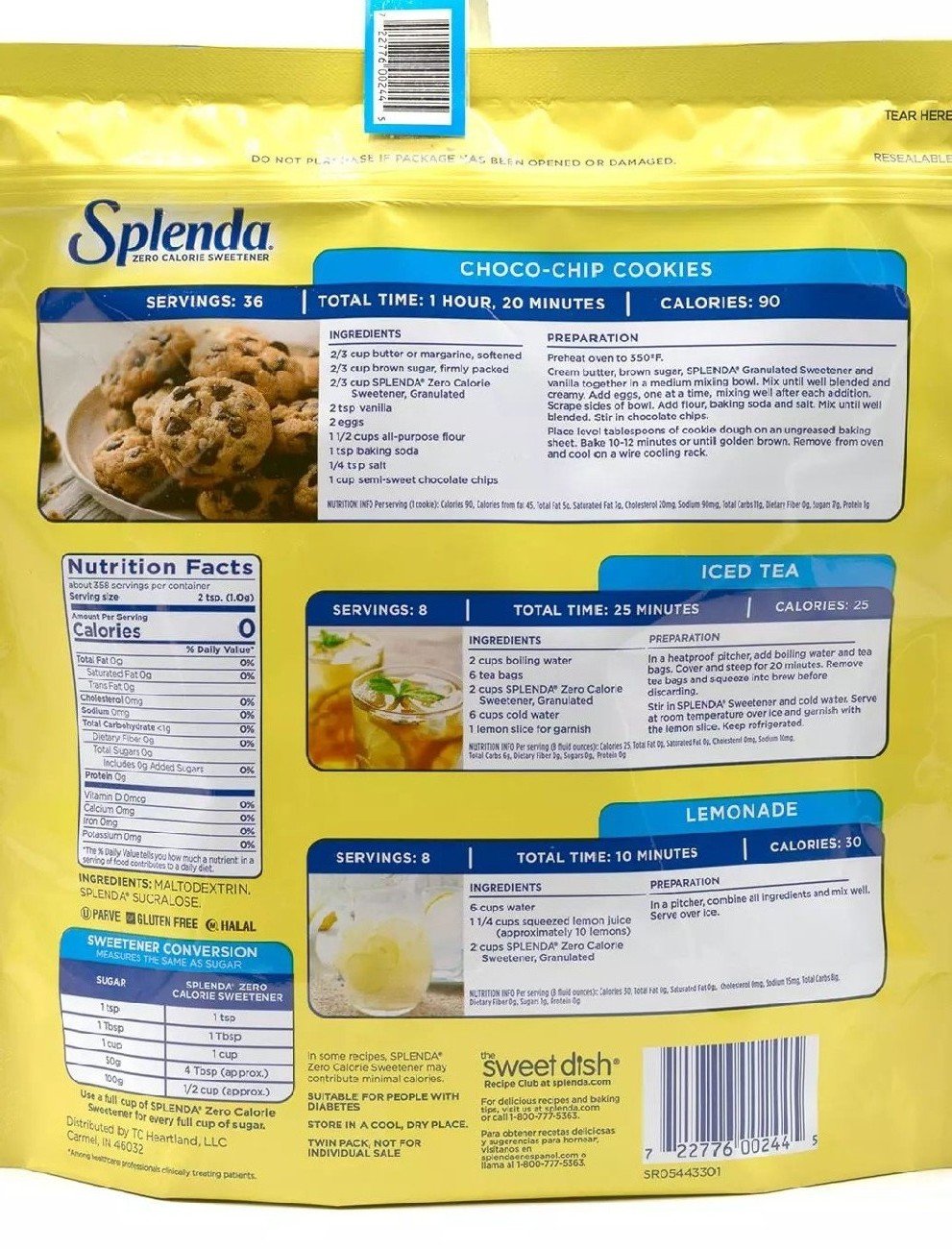 Pic4: back of package
Pic4: back of package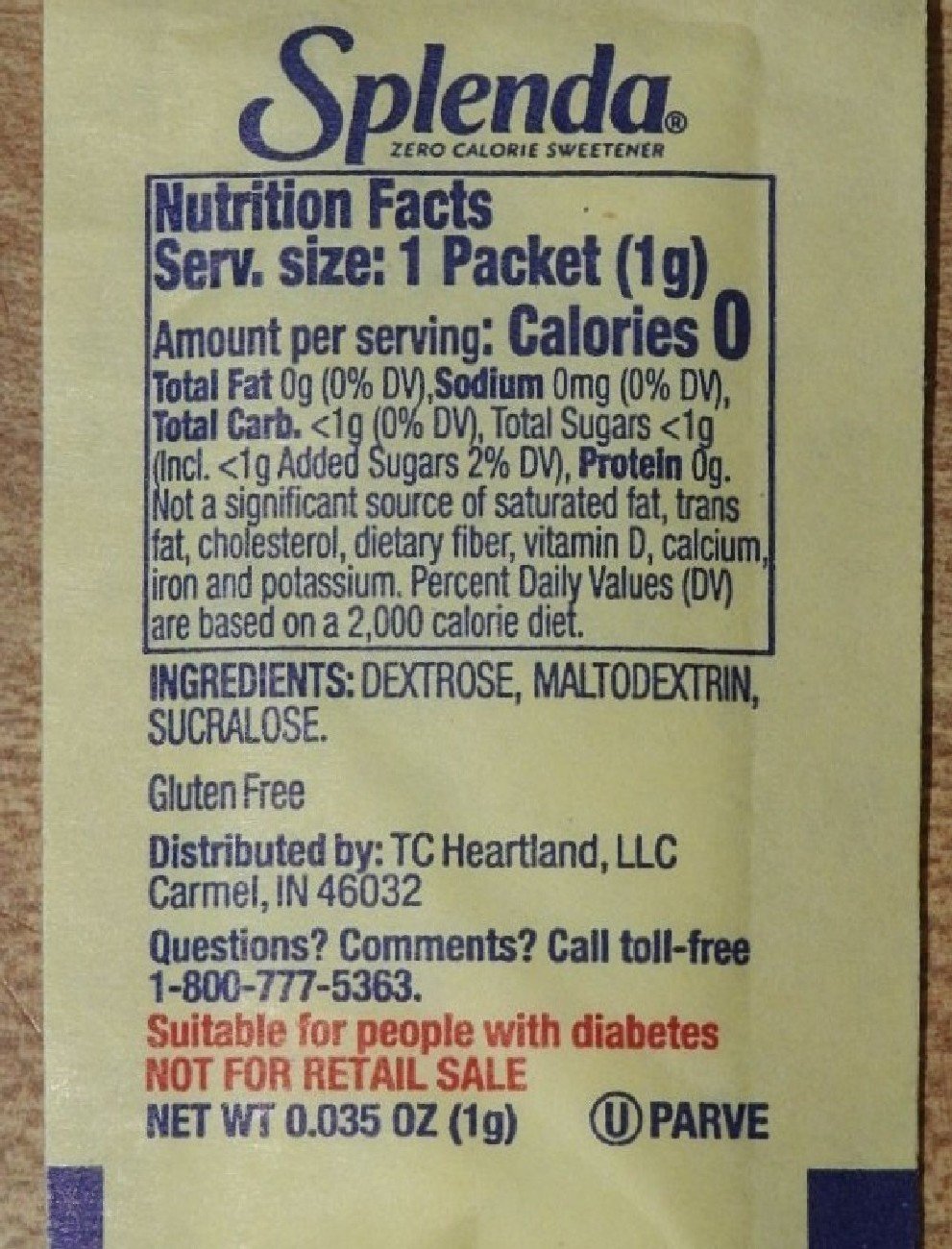 Pic5: sachet - fake nutrition "facts"
Pic5: sachet - fake nutrition "facts"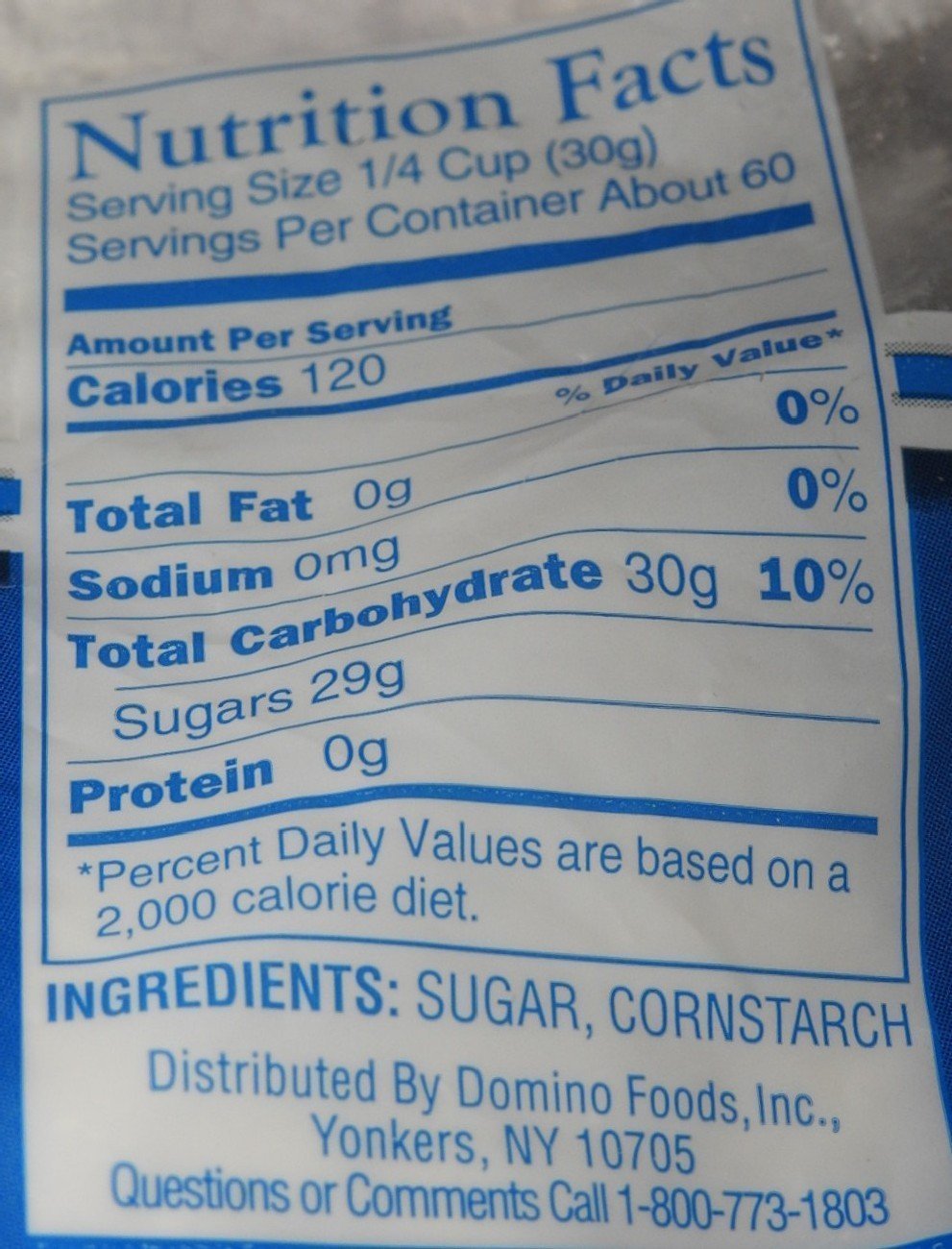 Pic6: powdered sugar label
Pic6: powdered sugar labelThe manufacturer's website https://www.splenda.com/recipe-index/ has dozens more of similar recipes that demonstrate the same pattern over and over again: Splenda use per serving is a lot more than than the advertised 1 or 2 tsp. per serving.
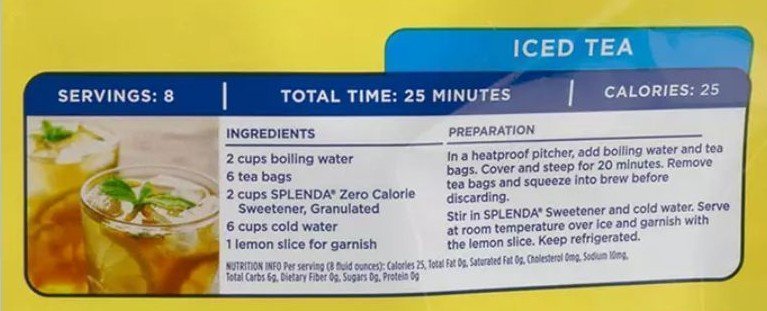 Pic8: iced tea recipe
Pic8: iced tea recipe
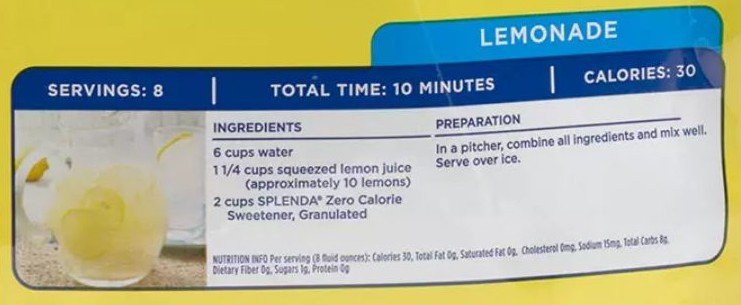 Pic9: lemonade recipe
Pic9: lemonade recipeCOMMENTS WITH Pictures 8 + 9:
 Pic10: detail of the back of the package
Pic10: detail of the back of the package
Manufacturer's false and/or misleading statements:
These are the 'generic' bags sold at Walmart. The packaging states "distributed by Walmart" which makes me suspect that the manufacturer is Tate & Lyle, or one of its US licensees.
The wordage is nearly identical to the Splenda packaging, one serving = 0.5 gram, but the main recommendation on the front of the package is "great for baking."
The recipes on the back of the package are not included in the Tate & Lyle reicpe page, but they appear to be Americanized versions os very similar recipes with all the ingredients "Walmartized."
In addition to the questionable Splenda wordage, Walmart misrepresents this product as being sucralose in its conversion chart, when the sucralose content is less than 2 tenths of a percent.
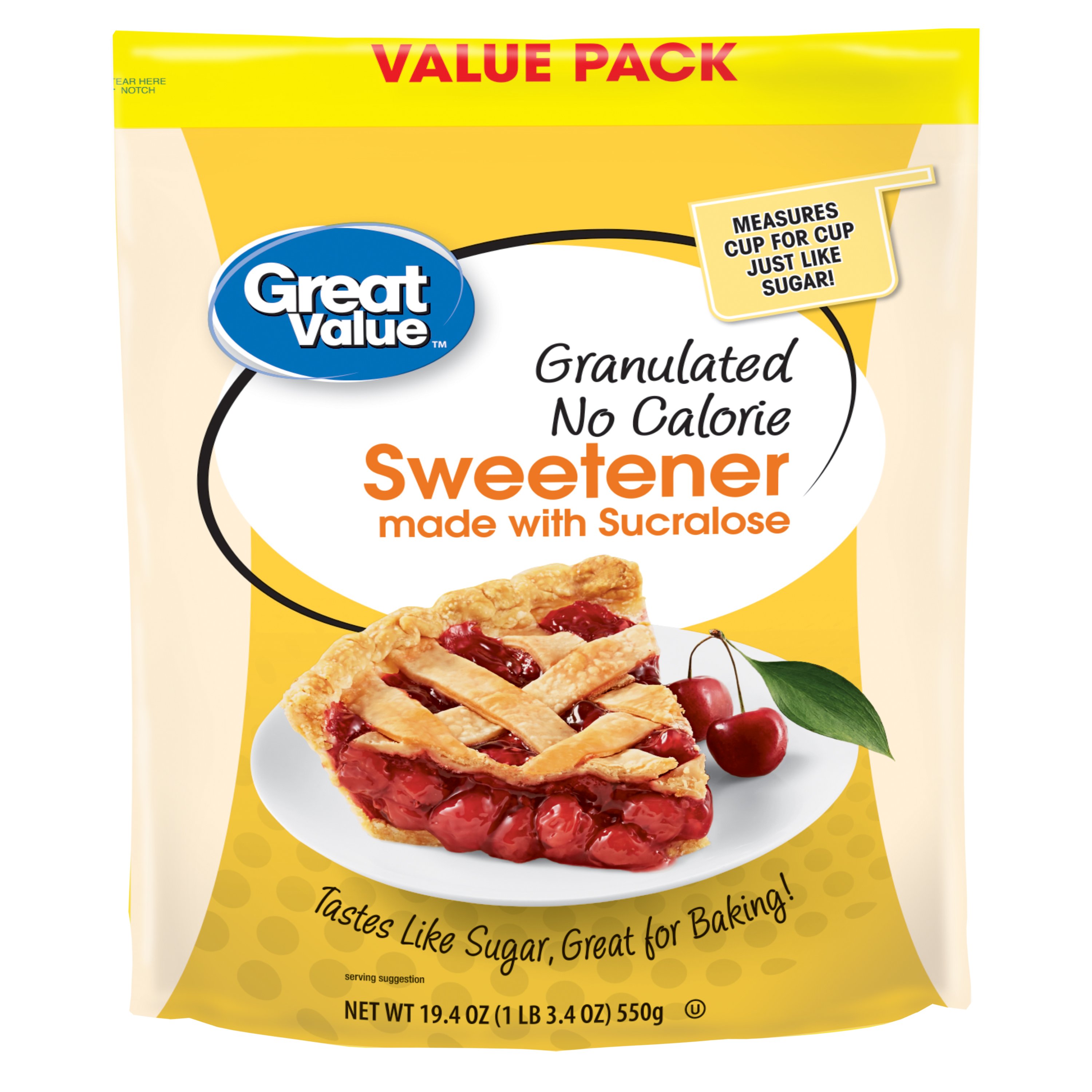 Pic11: "Great Value" front
Pic11: "Great Value" front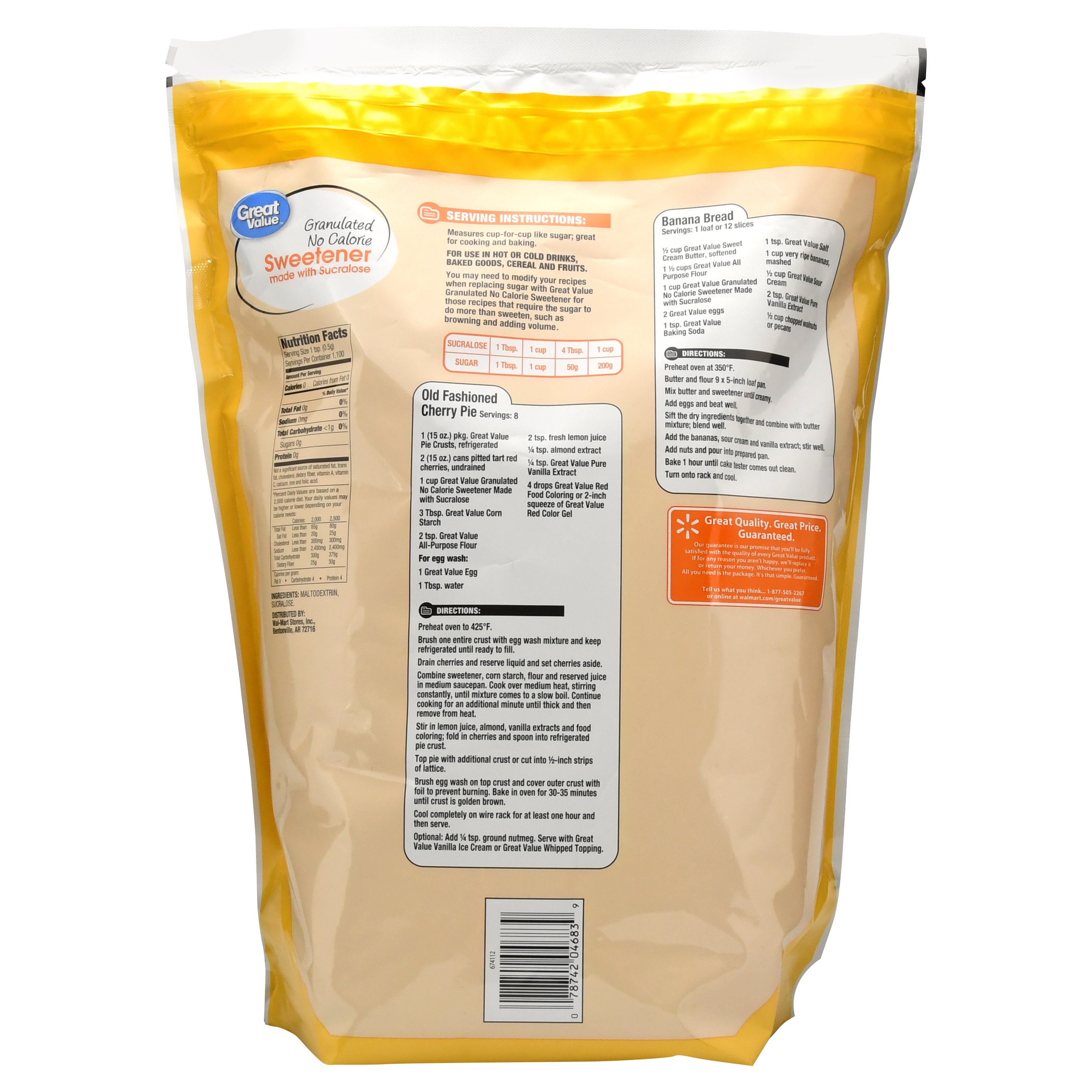 Pic12: the back of the package
Pic12: the back of the package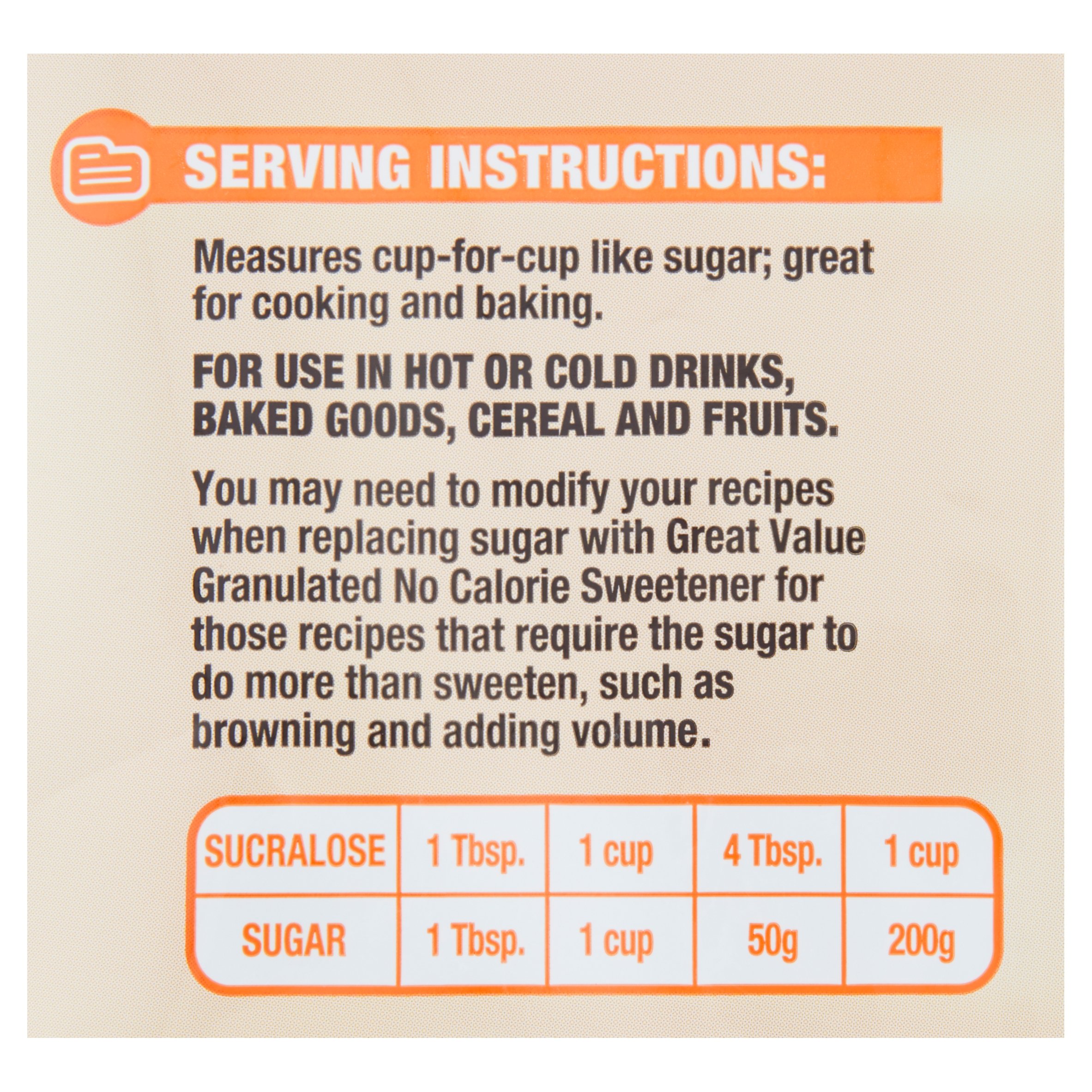 Pic13: "great for cooking and baking"
Pic13: "great for cooking and baking"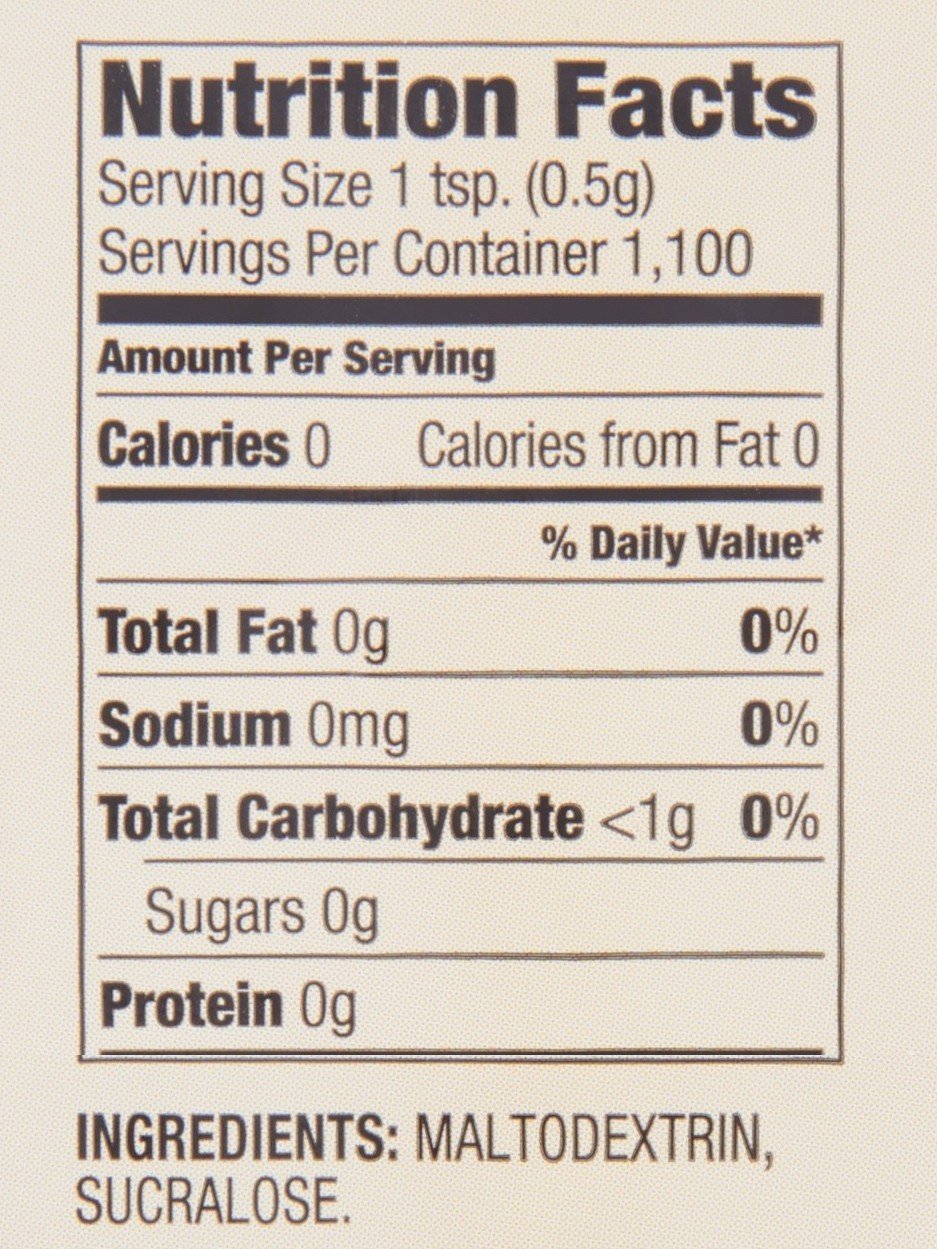 Pic14: fake nutrition "facts"
Pic14: fake nutrition "facts"
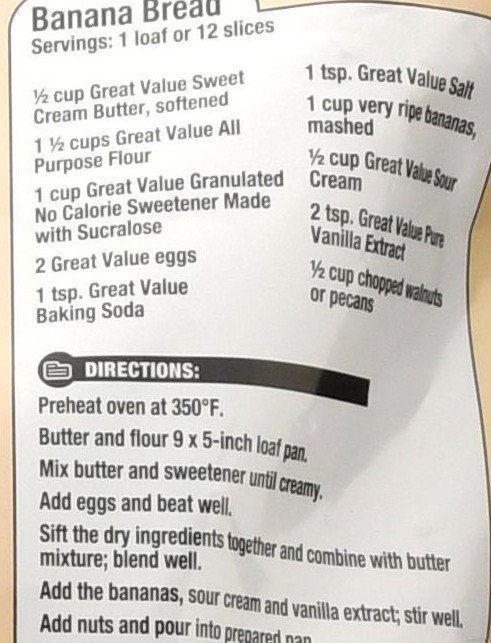 Pic15: banana bread recipe
Pic15: banana bread recipe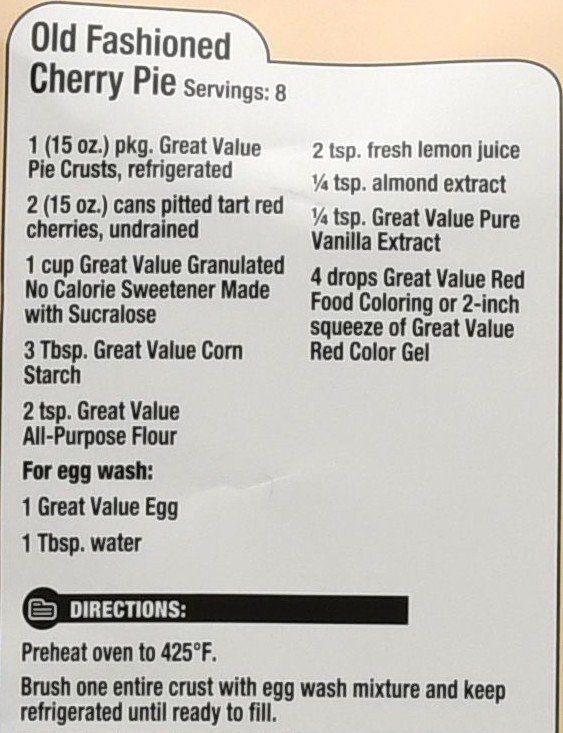 Pic16: cherry pie recipe
Pic16: cherry pie recipeThe 2 recipes on the back of this package also use considerably more product per serving than the declared one serving size of 0.5 grams.
Pic15: banana bread uses 1 cup (48 tsp.) for 12 servings
= 4 tbsp. or 2 grams per serving
= 8 times more than the declared 0.5 grams per serving.
Pic16: cherry pie uses 1 cup (48 tsp.) for 8 servings
= 6 tbsp. or 3 grams per serving
= 12 times more than the declared 0.5 grams per serving.
This demonstrates once more that the declared 0.5 grams per serving is nonsensical.
(*)
article: Is Maltodextrin a Sugar? (source)
(**)
Dextrose aka D-glucose is the naturally occurring form of glucose in humans a.o. higher organisms. L-glucose can be synthesized in a lab, but cannot be processed by the human body, L-Glucose was once proposed as a true no-calorie sweetener and it is suitable for patients with diabetes mellitus, but it was never marketed due to excessive manufacturing costs.
This 'renaming' is quite common in food labeling and its purpose is to confuse and mislead the consumer.
When MSG started getting a bad name, food companies started giving it a bunch of other names to hide it away in the ingredients listings: monosodium salt, monohydrate, monosodium glutamate, monosodium glutamate monohydrate, monosodium L-glutamate monohydrate, MSG monohydrate, sodium glutamate monohydrate, UNII-W81N5U6R6U, L-Glutamic acid, monosodium salt, monohydrate, autolyzed yeast autolyzed yeast protein, calcium glutamate, glutamate, glutamic acid, hydrolyzed corn, ingredients listed as hydrolyzed, protein fortified, ultra-pasteurized, fermented, or enzyme modified, magnesium glutamate, monoammonium glutamate, monopotassium glutamate, natural flavors, soy isolate, soy sauce, textured protein, vegetable extract, yeast extract , yeast food.